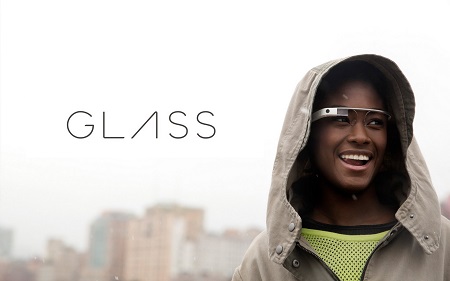- The Ayodhya verdict: Justice for the oppressed
- Vivek Oberoi Reached The Election Commission of India With The Makers Of The Biopic, The Answer Given To The Show Cause Notice
- World Media: India Cannot Be Take Lightly In Terms Of Technology, The Country Can Consider Anti-Satellite Spacecraft
- Fidayeen Adil used Virtual SIM, Was In Constant Contact With The Cross Border Handler
Google glass has been a topic of discussion for close to a year now since its very public display and demo by one of the Google founders Sergy Brin. It is nice to see videos (since I am not one of the few lucky people who got to spend $1,500 /- to get their hands on the developer version of the Google Glass) where Glass performs some actions based on the voice operated commands that the wearer delivers in his own voice using simple language of daily use. Glass take a picture, Glass search for this, etc. are the applications that have been shown way too many times now by the way of multiple videos. The question that I am

pondering upon here is that, can Google glass be used for useful application in the Logistics Industry? Can it help simplify and improve the efficiency of the daily work a logistics executive does in a warehouse or any other setting for that matter? Well, here are a few ideas; –
Google Glass in a warehouse
Voice operated and light operated pick and stack systems have become quite common in the logistics parlances now. Most of the large scale and sophisticated warehouses around the world are using technologies like Pick to Light and Pick to Voice for guiding their staff to perform their pick operations that involve the following steps: –
- Get information about the item that is to be picked
- Find out the information about the location of the item in the warehouse
- Find out the best and shortest way to reach the location where the item is located
- Reach the place
- Scan the location of the item
- Pick the item
- Scan the item (s)
- Scan the trolley carried by the picker
- Move on to the next item being that is to be picked up
- Follow the same cycle again till all the items to be picked in the pick cycle are picked
- Move on to the packaging area and hand over the items for packaging and further processing
So, how can Google Glass help in any of the tasks? Let us take it step by step. The unique thing about Glass is the list of inbuilt technologies it has. Glass has the following features inbuilt: –
- Mobile device:- Glass has almost all the features of a basic mobile phone, e.g.,
- Head mounted display in front of the wearer’s eyes:The head mounted display in front of the wearer’s eyes can be used to display the information related to the product that is to be picked. Information like the item name, location of the item, quantity to be picked etc. can be displayed. The display can also be used to show the way to reach the location of the next item that is to be picked.
- Built in audio device via bone-conductive speaker technology. Additional inputs if required can be passed on to the picker wearing the device.
- Connectivity to the internet
- via smartphone using Bluetooth tethering
- Via Wifi by transfering the Wifi connectivity information to glass using QR codes or via the web control panel for Glass. Source: http://www.geek.com/android/using-glass-without-a-smartphone-1560068/
- Turn by turn navigation (Need to explore the possibility of in building navigation – using custom built app). I will be a great feature to have. Navigation inside the compound will be a great feature to have. Although Google maps is undertaking an effort to map insides of famous buildings, it will be better for business to make their own maps for their own facilities so that to enable employees to work more efficiently.
- Take pictures – use the camera to either read barcodes or QR Codes. Item that are picked and the locations that the picker picks the items from can be scanned using the inbuilt camera. An app for that purpose will have to be built or found out.
- Send and receive messages. Communication between the employees for passing on any information can be taken care of by the messaging facility chosen by the organization.
All of these needs and features need to be explored in greater detail to make Google Glass in Logistics a possibility. It can solve a real business problem by providing the basic platform for providing such services. One question that is pertinent to all the above possibilities and assumptions is that, will Google be able to launch the device as a consumer product for the mass market? This is very necessary for Google Glass to be successful and for different types of usage of the device other than the simple Google glass that is being talked about as of now.
I will talk about the possibilities in more detail in the next part of the article.

2 responses to “Technology in Logistics – Google glass as a audio and display device”
We have 20 percent of our attendees from logistics. Logistics is serious business and great to see the discussion.
Hi Peter, it is good to have you here… expect more articles on similar subjects